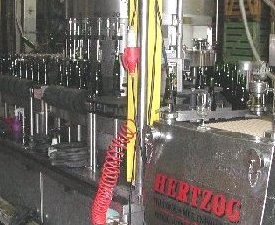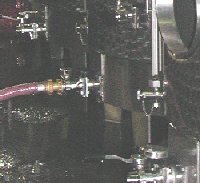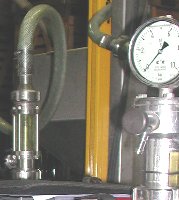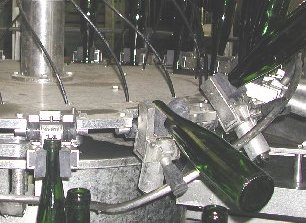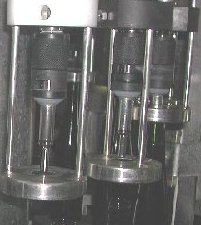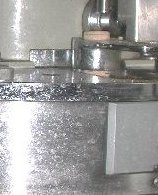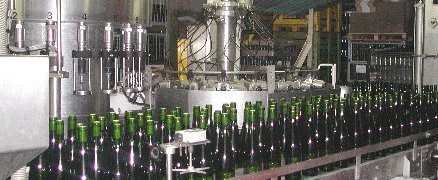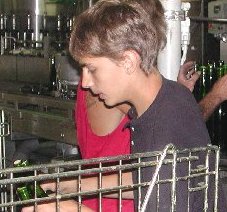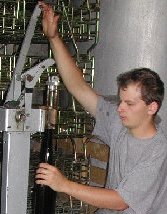|
|
||||||||||||||||||||||
|
||||||||||||||||||||||
|
|
||||||||||||||||||||||
|
|

|
|
||||||||||||||||||||
|
|
|||||||||||||||||||||
|
23 August 2002
|
||||||||||||||||||||||
|
|
The varieties that were bottled that day were: Grand Cru Zinnkoepflé Riesling,Tokay and Gewurztraminer, The Noble Valley late harvest Tokay and Gewurztraminer, late harvest Grand Cru Zinnkoepflé Riesling. |
|||||||||||||||||||||
|
|
The operations: |
|||||||||||||||||||||
|
||||||||||||||||||||||
|
||||||||||||||||||||||
|
6. The bottles continue their way to a resting bay where they stay for a few minutes so that the corks have the time to return to their original diameter. This has to be done so that the bottles become watertight for later handling operations. A big visible-to-all meter records the number of corked bottles to be able to determine the cost of the filling operation (6 euro centimes per bottle plus a fixed amount for the filtering). |
||||||||||||||||||||||
|
|
||||||||||||||||||||||
|
||||||||||||||||||||||
|
|
||||||||||||||||||||||

